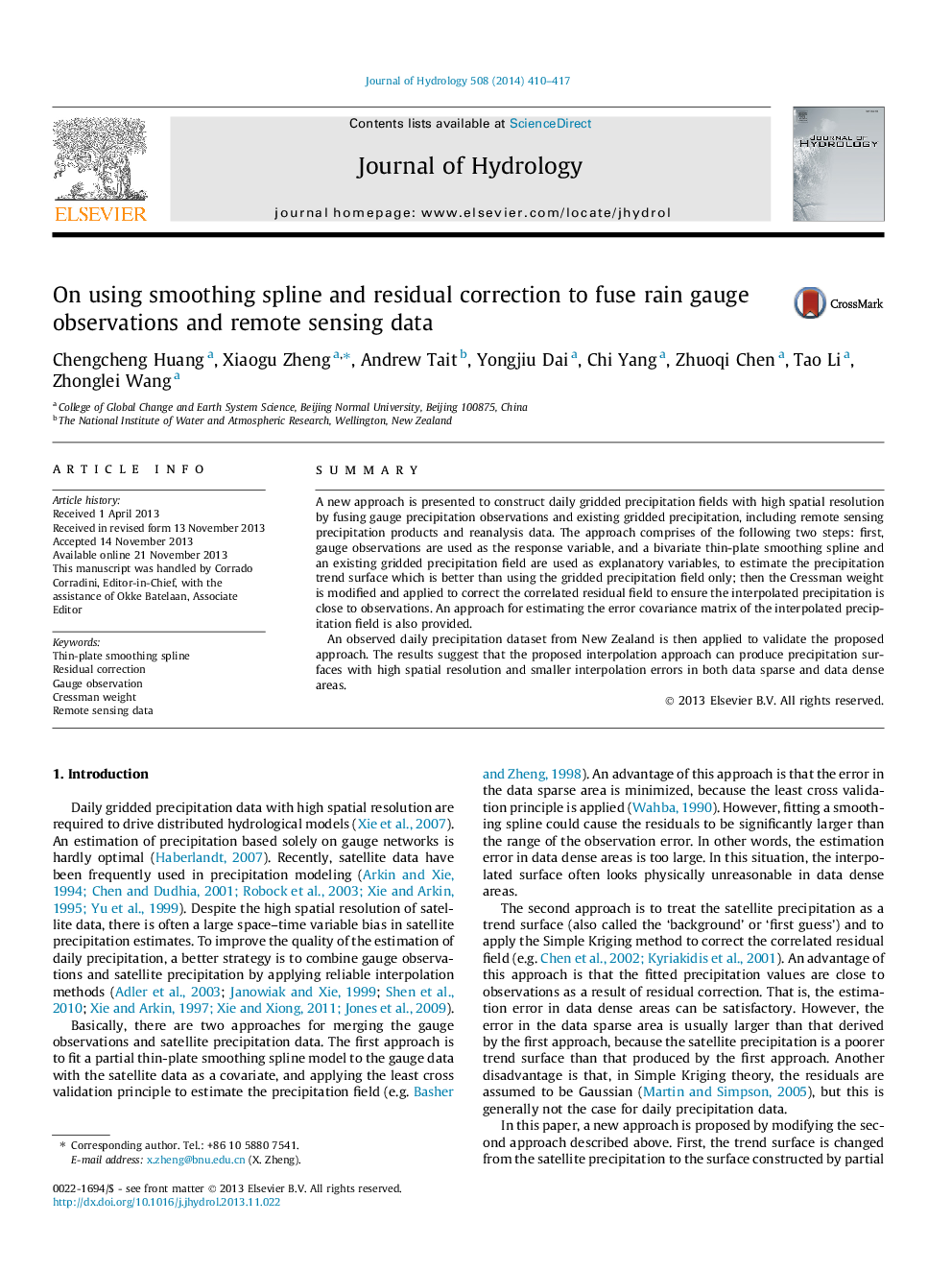| Article ID | Journal | Published Year | Pages | File Type |
|---|---|---|---|---|
| 4576066 | Journal of Hydrology | 2014 | 8 Pages |
•Partial thin-plate smoothing spline model is used to construct the trend surface.•Correction of the spline estimated trend surface is often necessary in practice.•Cressman weight is modified and applied in residual correction.•The modified Cressman weight performs better than Cressman weight.•A method for estimating the error covariance matrix of gridded field is provided.
SummaryA new approach is presented to construct daily gridded precipitation fields with high spatial resolution by fusing gauge precipitation observations and existing gridded precipitation, including remote sensing precipitation products and reanalysis data. The approach comprises of the following two steps: first, gauge observations are used as the response variable, and a bivariate thin-plate smoothing spline and an existing gridded precipitation field are used as explanatory variables, to estimate the precipitation trend surface which is better than using the gridded precipitation field only; then the Cressman weight is modified and applied to correct the correlated residual field to ensure the interpolated precipitation is close to observations. An approach for estimating the error covariance matrix of the interpolated precipitation field is also provided.An observed daily precipitation dataset from New Zealand is then applied to validate the proposed approach. The results suggest that the proposed interpolation approach can produce precipitation surfaces with high spatial resolution and smaller interpolation errors in both data sparse and data dense areas.
